Odisha is very well-known for its culture and ancient Hindu Temples. Bhubaneswar is the capital city of Odisha and its Tribal Museum is the primary tourist attraction of this place. Puri, a town in Odisha can be rightly termed as the spiritual capital of the state and it is no wonder that the place sees an influx of thousands of devotees daily. The tourist attractions in this coastal district cover religious temples, archeological structures, and pristine beaches. The vicinity of the Bay of Bengal blesses the place with moderate temperatures ensuring a pleasant climate throughout the year.
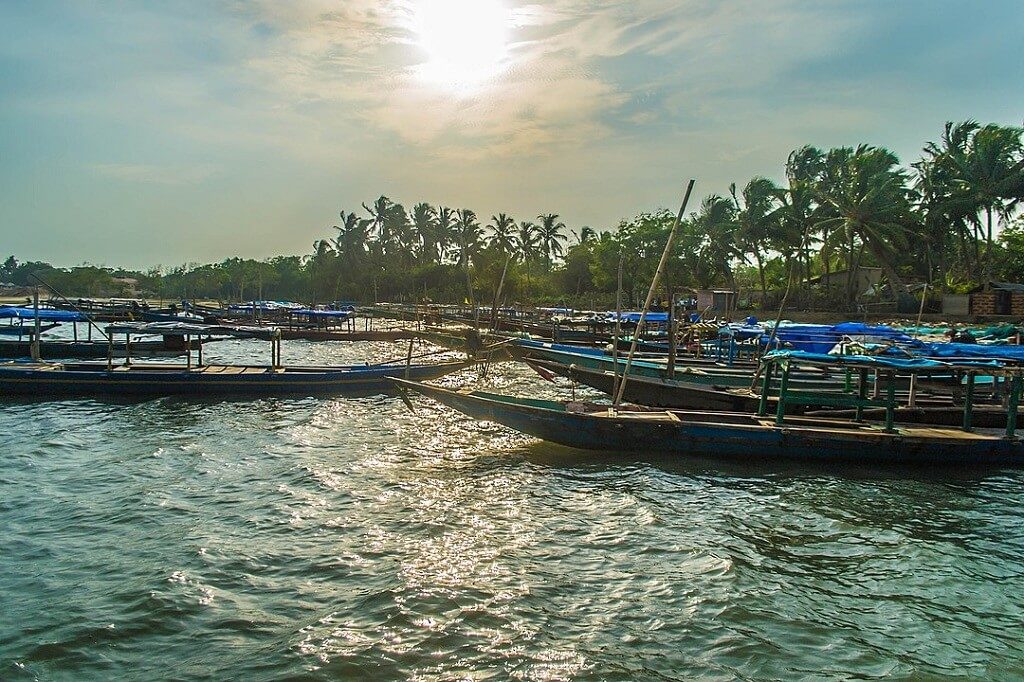
If you ever happen to be in this divine land of spirituality and architecture, then let me suggest you some places, you must visit to make the most out of your pleasant trip and I will going to tell you all you should know about the Jagannath Puri. Now let’s begin the journey of “The divine land of Jagannath Puri, Odisha“
11 Best Places to Visit in Puri
1. Shree Jagannath Temple – Famous Hindu Temple in Puri
Considered as the pious pilgrimage for Hindus, Jagannathdham is one amongst the char dhams of the Hindu religion, with others being Badrinath, Dwarka, and Rameshwaram. The temple worships Lord Jagannath, a form of Lord Vishnu along with the lord Jagannath are his siblings Lord Balabhadra and Devi Subhadra. All three deities sit inside the main sanctum of the temple.
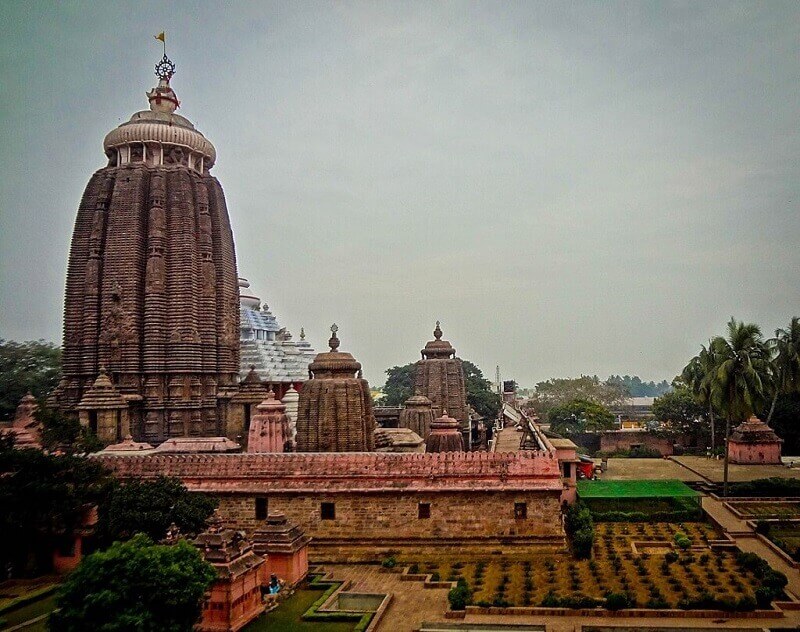
Why Jagannath Puri is Famous?
- There are lots of stories and history relating to the temple and the god. The idols of the deities are different from others, in the way that the idols are not completely made and they appear different from the other god idols we usually encounter.
- The idols here are replaced every 12 years and are carved out of specifically chosen wood. Apart from the before mentioned gods, temples of many other gods are spread across the temple premises. The temple of other gods and goddesses also hold much importance and are looked upon during many auspicious occasions during the year.
- The structure of the temple is beautifully made in the Kalinga style of architecture. There are four entrance gates to the temple, which have been named Singhadwara, Ashwadwara, Hathidwara, and Vyaghradwara referring to the brave and courageous animals like lions, horses, elephants, and tigers respectively.
- The temple is a mighty structure spread across 10.5 acres and the main entrance gate is the one in the east direction. The height of the main temple is around 192 feet and it holds a Neel chakra that is said to be an alloy of eight important metals. The temple is divided into chambers namely Bhogmandir, Nata-mandir, the Jagamohana and the sanctum or the Deul, each of which has religious importance.
- The temple is also famous for housing the world’s largest kitchen which cooks prasad for the deity and thousands of his devotees every day. The utensils used here are all earthen pots, which are discarded after single use. This mega kitchen is worth watching.
Famous Festival– Rath Yatra
Date – 1st July 2022 – Friday
Darshan Timings: 5:30 AM to 10 PM
2. Gundicha Temple – One of the Most Renowned Temples in Puri
Gundicha Temple is believed to be the abode of Lord Jagannath’s aunt and is probably the second most popular religious site in Puri after Lord Jagannath’s Temple. During the famous Rath Yatra, the procession of Lord and their siblings commences from the Jagannath Temple and rest at Gundicha Temple for a week before going back to the main Temple to shower blessings to the devotees.
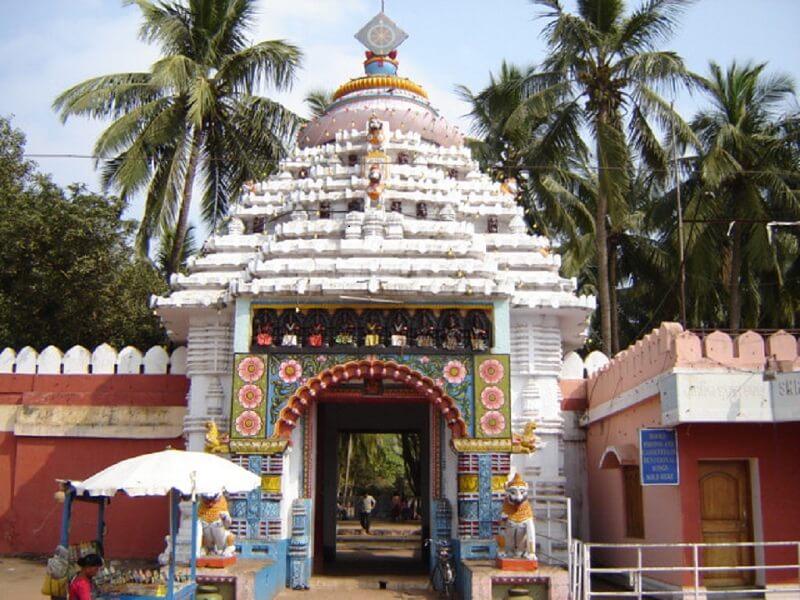
- The beautiful structure of the temple stands amidst a beautiful garden and the architecture is inspired from Kalinga style. Jagannath Temple Administration has maintained it very well. Puri and the main structure is surrounded by tall cooling coconut trees.
- The temple is constructed using light gray sand stone with intricate and marvelous carvings. The Gundicha Temple has two gates; the western gate is the main gate and gate on the eastern side is refereed as Nakachana Gate.
- The entire Rath Yatra takes place for nine days; the deities travel from the Jagannath Temple to the Gundicha Temple, rest for seven days here and leave back to the main temple on the ninth day.
- The entire journey is also referred to as Gundicha Yatra or Nava Dina Yatra. During Rath Yatra, the deities enter the temple through the western gate and exit from the eastern gate. It is believed to be the most auspicious time to take blessing of the Lords at Gundicha Temple during their stay and is called Adapa Darshana.
Timings: 6 AM to 3 PM & 4 PM to 10 PM
Entry Fee: No Entry Fee
3. Sudarshan Craft Museum
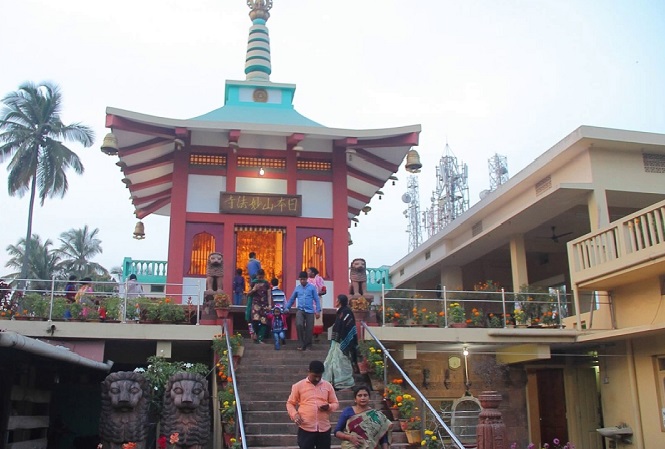
The Sudarshan Craft Museum is located at the station road at a distance of 2 Km from the Puri railway junction and is a highly recommended place to visit for art lovers. The Museum was established in the year 1977 by the renowned artist
Shri Sudarshan Sahoo and showcases a unique collection of his artistic works like intricate carvings in wood, stone, and fiberglass apart from fine paintings. The popular attraction of the museum is a Buddhist temple built in the Japanese style of architecture.
Art enthusiasts visits this museum regularly as it features some of most rare works of traditional art which imparts an enriching and knowledgeable experience. The museum also offers a platform for aspiring artists to showcase their talent and different artworks like carving in stone, paintings and handicrafts are available for sale as well. The museum represents some of the forgotten gems of Indian art which are of historical and cultural importance.
Timings: 8 AM – 12 PM & 2 PM – 8 PM
Entry Fee: INR 5 for Indians & INR 50 for Foreigners
4. Puri Beach
Puri beach was awarded by blue flag tag on October 2020. The Puri beach is situated at a distance of 2 km from Lord Jagannath temple and around 2.5 km from the Puri Junction. The pristine white sand beach is located along the coast of the Bay of Bengal and is considered one of the cleanest beaches in the entire country. It has been a popular tourist attraction and is frequented by visitors along with their families thanks to its peaceful atmosphere and crystal clear water.
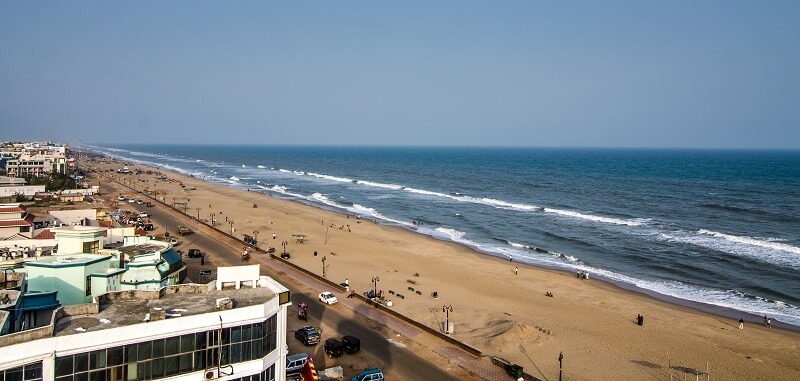
The beach also holds religious significance as the pilgrimage by the devotees visiting Lord Jagannath Temple is believed to be incomplete without the purification dip at the Puri beach. However, the currents at the beach are quite strong and unpredictable and visitors are advised to swim cautiously. The tranquil and clean beach draws large crowds of Indian as well as foreigners.
The beach has grown its popularity also due to the detailed sand sculptures designed by internationally renowned sand artist ShriSudarshanPatnaik. The subject of these sculptures varies from Hindu mythology, contemporary events as well as latest global trends and attracts large crowds. A striking feature of the Puri beach is the opportunity to witness sunrise and sunset on the same beach; quite a rare feature. The annual Puri Beach Festival is held every November for five days and this event witnesses thousands of locals and well as tourists.
Timings: 6 AM – 7 PM
5. Narendra Tank / Narendra Pokhari
The holy tank at MauzaDandimalaSahiis situated at a distance of 1 km from Jagannath Temple and around 2-3 kms from the Puri railway station. One of the largest, most picturesque and celebrated tanks in Orissa, it was constructed in 15th century A.D. by the then ruler Narendra Dev. The tank spreads over a vast area of 14.5 acres and is considered holy as it is surrounded by many small and big temples. The water level at the tank is around 10 feet below the road level and the maximum depth of the tank is 28 feet.
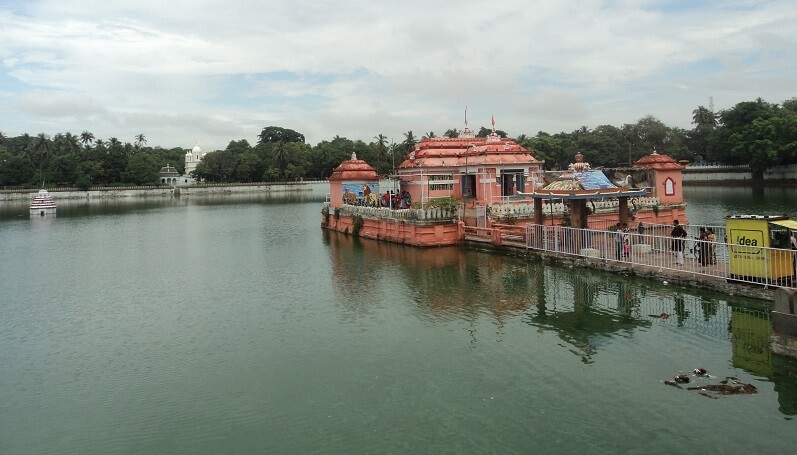
The tank features a small island in the middle which houses the small temple of ChandanaMandapa. The temple can be accessed from the southern bank of the tank with a bridge. The tank has 16 ghats which are used by the pilgrims for the holy bath. The steps of the main ghat are made up from Khondalite; a metamorphic rock named after the native Khond tribe of Orissa.
The main tourist attraction at the Narendra Tank is the annual ChandanaYatra of Lord Jagannath for 21 days in the Baisakhi month of the Hindu calendar. During this festival, different deities from the temples surrounding the Tank are taken out and floated in the holy water of this tank. The deities are then applied with a paste of chandana (sandalwood) and washed.
Timings: 6 AM to 9 PM
6. Balighai Beach
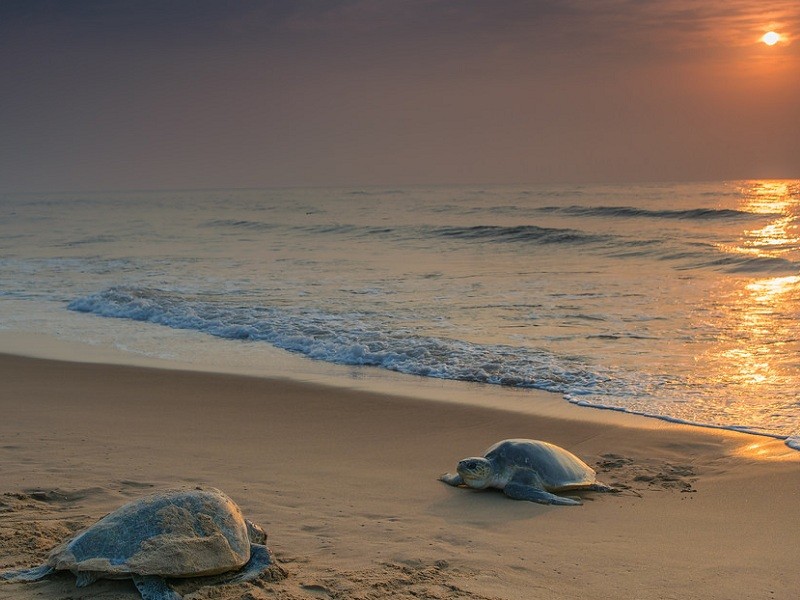
The pristine Balghai beach is situated along the coast of the Bay of Bengal at a distance of 8 km from Puri on the Puri-Konark Marine drive road. This relatively hidden gem is situated at the mouth of the Nuanai River and has remained highly under-rated.
A line of majestic Alaska and Eucalyptus trees skirts the beach and this place completely stands out from the crowded Puri beach. Tourists are frequently visiting the beach to soak in sunbath and witness the serene view of Sunrise and Sunset and indulge in refreshing water activities like parasailing, jet skiing and boat riding.
The beach is also notable from a bio-diversity point of view as a home for some exotic migratory birds during the winter season. Oliver Ridely Turtles have been spotted during December and January to lay eggs and the Sea Turtle Research Centre is situated quite close to the beach. The endangered species of Balihirana antelope and Indian Black Bucks can be spotted by visiting the nearby Balihirana Deer Sanctuary.
Timings: 24 Hours open
7. Bedi Hanuman Temple
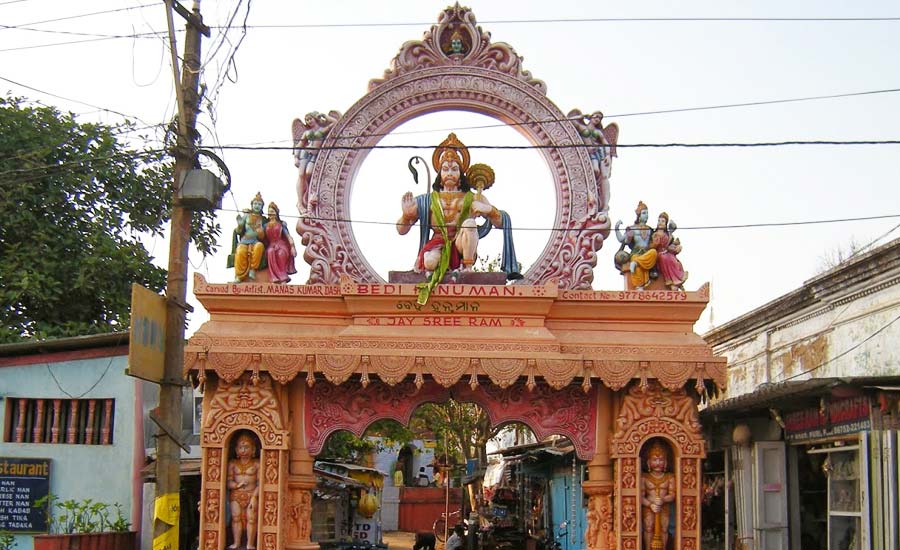
The small sea side temple dedicated to Lord Hanuman is located at a distance of 3 and 1.5 kms from the Jagannath Temple and Puri Junction respectively. The temple is also known as DariaMahavir; ‘Daria’ meaning sea in native language and ‘Mahavir’ being another name for Lord Hanuman. It is believed that this temple and Lord Hanuman protects the city against the rage of adjoining mighty sea.
There is an interesting story behind origin of the name ‘Bedi Hanuman’ for the temple. According to Indian mythology, when the Jagannath Temple was built, ‘Varuna’- Lord of the Sea came to Puri to pay respects to Lord Jagannath which resulted in flood in the city causing damage to the temple and the city. Since Lord Hanuman was supposed to be protecting the city from the sea, Lord Jagannath summoned him for explanation. Lord Hanuman had gone to Ayodhya without informing Lord Jagannath and as a punishment he ordered Lord Hanuman’s hands and feetto be tied with a rope/chain (Bedi in Hindi) so that he could not move ever again and is vigilant. Since his hands and feet are tied with rope, the temple is referred to as Bedi (or chained) Hanuman temple. The main statue of the temple is two armed Hanuman holding ‘Gada’ in his right hand and sweet in his left hand.
Timings: 6 AM to 6 PM
Entry Fee: Entry is free
8. Markandeshwar Temple
Markandeshwara Temple is one of the PanchTirthas of Puri and is another famous temple in Puri. It is located at a distance of 1 km from Sri Jagannath Temple and 3 km from Puri Junction and is considered one of the fifty two sacred Shiva places in India.
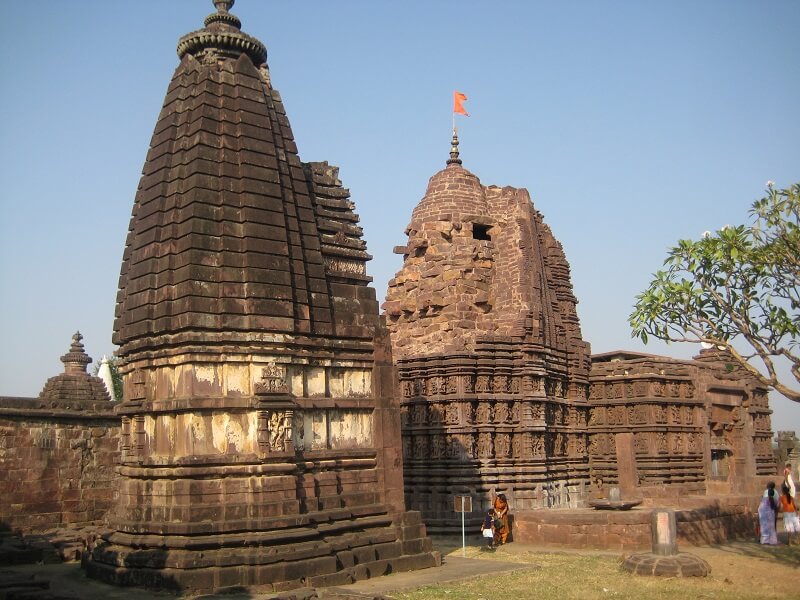
The 12th century temple is dedicated to Lord Shiva and is believed to be erected by sage Markandeya. As per Hindu mythology, sage Markandeya was saved from great danger by Lord Shiva at this very place and the sage built the temple as an act of gratitude. The temple has an open tank which is used for performing rituals as it is considered to be the starting point of Puri pilgrimage. The temple is also known as Markendeya Shiva Temple and Markandeshwara Mahadeva Temple. Despite being a Shiva temple, it is connected to Lord Jagannath through the event of ChandanYatra.
Timings: 5 AM to 9 PM
9. Lokanath Temple
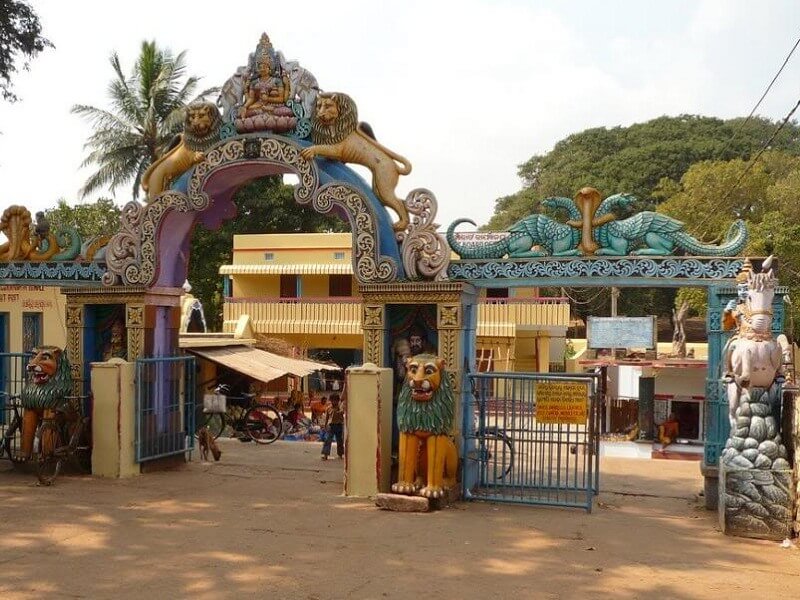
The Lokanath Temple is situated at a distance of 2 km and 4.5 km from Sri Jagannath temple and Puri Junction respectively and is dedicated to Lord Shiva. The 11th-century temple is one of the most important Shivaite temples of Odisha and the main deity of the temple is in the form of lingam.
The striking feature of the temple is that the Shiva lingam remains submerged under water throughout the year in accordance with the legend of Indian mythology that Goddess Ganga flows from the hair tips of Lord Shiva. However, on the occasion of ‘PankodharEkadasi’ before Mahashivaratri, the water is taken out of the temple and the lingam becomes visible. A large number of devotees throng the temple on this particular day as it is believed the deity has powers to cure health-related problems.
Timings: 5 A.M. to 8 P.M.
10. Chilika Lake & Sanctuary
Situated at a distance of 44 km from Puri, Chilika Lake is Asia’s largest inland salt water lagoon studded with a number of small islands. The pear-shaped lake sprawls in more than 1100 sq km in area and is separated from Bay of Bengal by a narrow strip of marshy islands. The Chilika Lake was declared as the first Indian wetland of international importance in the year 1981.
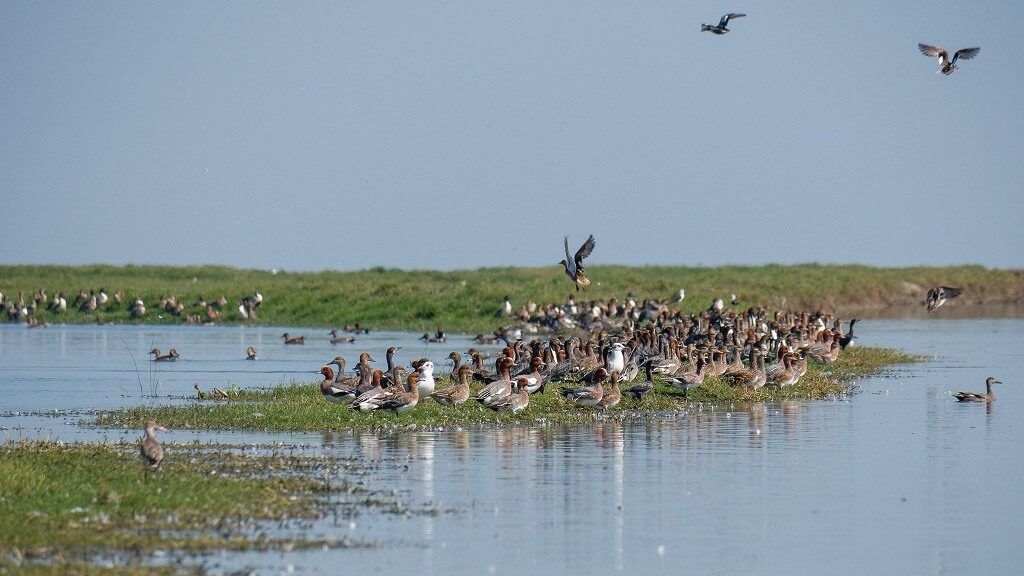
The Chilika Lake is a peculiar example of large sustaining ecosystem supporting more than 1.5 lakh villagers living on the islands and mainland. The lake witnesses a large variety of migratory birds in the winters from the Caspian Sea, Russia, Mongolia, and the Himalayas to name a few. The lake is a bird watcher’s delight thanks to the spotting of different exotic birds like flamingos, sea eagles, herons, graylag geese etc. The aquatic wildlife is abundant as well including Irrawaddy dolphins with strikingly different fins and color. Additionally, wild animals such as blackbuck, golden jackals and hyenas can be found here.
With such a vast biodiversity, eco-tourism has increased manifold in the last decade. A recently conducted environmental survey estimates the presence of more than 700 rare aquatic and non-aquatic plants in the vicinity of Chilika Lake. Tourists frequently visit the lake throughout the year and the tourism peaks between the months of November to February due to the abundance of migratory birds. Boating and bird watching are most popular activities of the Chilika Lake Sanctuary.
Timings: 6 AM to 7 PM
Boat riding charges: Rs. 2500 – 3000 for 1. 5Hr trip
11. Konark Sun Temple
The World Heritage Monument of Konark Sun Temple has located 35 km from Puri on Marine Drive road. Konark sun temple is listed in the UNESCO world heritage site in 1984. It is believed that King Narasimhadeva-I has built the present-day structure in the 13th century and is undoubtedly the epitome of temple architecture. The temple is dedicated to the Sun god and is shaped in the form of a 30-meter-high chariot having intrinsic carvings on wheels and pillars. The temple structure built in Kalinga architecture is a testimony to the Indian heritage and the mathematical minds of our ancient scholars and the craftsmanship of sculptors.
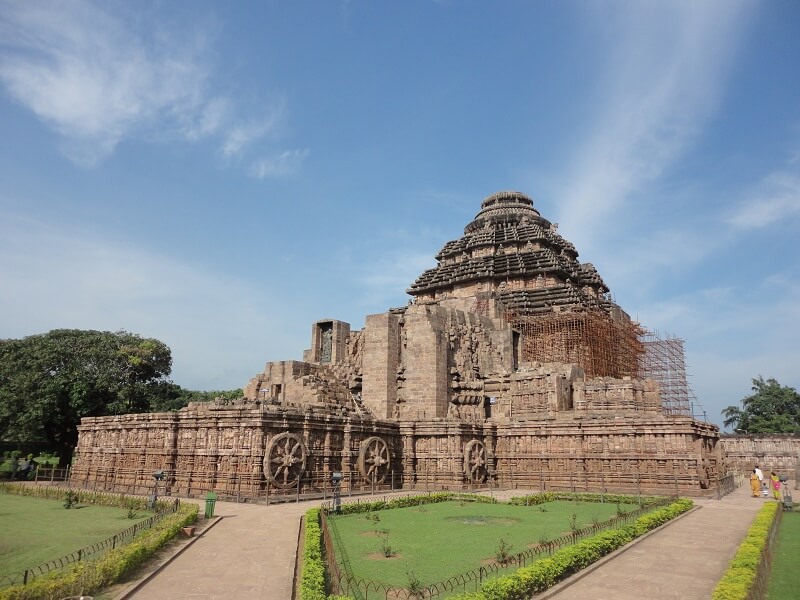
The chariots twelve pair of wheels represents 12 months of Hindu calendar each month paired into two cycles. These 24 elaborately carved stone wheels are roughly 12 feet in diameter and are pulled by a set of seven horses. The Konark Sun temple is a remarkable monument in terms of architectural design, detailing and fineness. The entire temple sprawls in around 26 acres of land and is an archeological marvel.
The Konark Temple in its present form has witnessed a series of attacks and damages since its inception in 13th century but the ruins of the erstwhile temple that remains still has the captivating charm.
Timings: 6:00 A.M. to 8:00 P.M.
Entry Fee: INR 40 for Indian visitors and INR 600 for foreigners.
Puri has numerous temples and it would be really impossible to include details of all of the temples in just one article. Still we would try to mention some of them so that you get an idea about the temple and plan your itinerary accordingly. Chakranarayan Temple: A temple dedicated to Lakshmi – Narsimha.
- Ardhasani Temple: Small temple dedicated to goddess Ardhasani; aunt of Lord Jagannath.
- Jameswara Temple: A 10th century temple dedicated to Lord Jameswara Siva.
- Alarnatha Temple: 11th century temple dedicated to Lord Vishnu.
Best Time to Visit Puri
If you ask me climate wise, I would suggest you to visit the place between the months of October to march that is most probably winter time, when the climate is pleasant and cool. But if want to be the part of the spectacular Ratha Yatra-The biggest festival of jagannath puri, then plan your trip in the months of June- July accordingly. Due to heavy rain and thunderstorms monsoon is not recommended season and in summer the whether of puri is extremely hot and humid so monsoon and summers are not perfect to visit Jagannath Puri.
- Best time to visit Puri – October to March
- Best Season to Visit Puri – Winter
Things to buy from Puri
You can fill your bags to take back variety of colourful religious trinkets and knick-knacks, the eye catching handicrafts, the sea- shell decorated items and the famous Palm leaf painting or Patta Chitra. You can take back the famous traditional sarees like Passapali, Bomkai, ikat and Sambalpuri saris to please your loved ones. The city also sells the varieties of stone crafts and silver works. Puri offers many other things like decorative trays, horn work, cigar boxes, stone statues, soapstone statuettes and silk-cotton handloom fabric available at various private emporiums in puri market.
Conclusion:
Apart from the above mentioned places, there are many more spiritual sojourns, pristine beaches and natural wonders to explore here. Puri is a complete package in itself to fit into desires of every kind of person.
Hope this article would be helpful to you if you are planning a trip to this divine place. Don’t forget to share your valuable experience of Puri once you are back..
